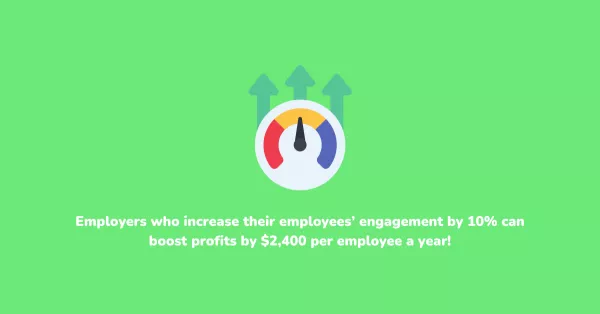Organizations must continuously adapt to changing market conditions, technological advancements, and workforce dynamics. One of the key drivers behind a company’s ability to navigate these complexities is its human resource management (HRM) practices. While traditional HRM focuses on managing day-to-day personnel tasks, strategic human resource management takes a forward-looking approach. It aligns human resource policies and practices with the long-term goals of the organization.
The shift towards strategic HRM reflects the increasing recognition that employees are more than just a resource they are a critical factor in achieving competitive advantage. When HR strategy is integrated into the broader business strategy, companies can optimize performance, foster innovation, and adapt more effectively to market changes. Strategic HR management emphasizes not only attracting and retaining talent but also developing and engaging the workforce to drive organizational success.
What is Strategic Human Resource Management?
Strategic human resource management is an advanced approach to managing human resources that integrates HR practices with an organization’s overarching goals and objectives. Unlike traditional human resource management, which primarily focuses on administrative functions such as hiring, payroll, and employee relations, Strategic HR management is more comprehensive and future-oriented. It considers human capital as a central asset that contributes directly to achieving competitive advantage in the marketplace and in turn how to manage human capital effectively.
At its core, Strategic HR management involves aligning the human resource function with the long-term strategies of the business. This alignment ensures that the HR department doesn’t merely respond to the needs of the workforce but actively contributes to shaping business outcomes. For example, if a company plans to expand into new markets, Strategic HR management plays a pivotal role in identifying talent needs, developing leadership skills, and fostering a workforce culture that supports the company’s expansion goals.
Strategic HR management is also characterized by its emphasis on proactivity rather than reactivity. Traditional HRM often responds to immediate concerns, recruiting staff for current vacancies, addressing employee grievances, and managing performance. In contrast, SHRM takes a long-term view, predicting potential HR challenges and opportunities and preparing strategies in advance. This proactive stance allows organizations to be more adaptable and resilient in the face of changes like technological advancements, economic fluctuations, and evolving employee expectations.
One of the key components of HR strategy is the alignment of HR policies with business objectives. This includes workforce planning, recruitment, career development initiatives, performance management, and succession planning. For example, if a company aims to innovate and lead within its industry, the HR strategy function would focus on recruiting employees with creative capabilities, developing training programs that enhance innovation, and establishing a reward system that recognizes and promotes innovative thinking.
Another vital aspect of HR strategy is the recognition of human capital as a strategic asset. Employees are not merely resources to be managed but are viewed as essential contributors to achieving long-term success. By nurturing and investing in their workforce, organizations can build a more skilled, motivated, and engaged team. This can lead to higher productivity, better customer service, and improved financial performance over time.
Moreover, HR strategy plays a critical role in fostering a strong organizational culture. It emphasizes creating an environment where employees feel valued, motivated, and aligned with the company’s vision and goals. A well-executed strategy can improve employee retention, drive engagement, and build a sense of loyalty, all of which contribute to organizational success.
In essence, it is about creating a cohesive link between human resource practices and the long-term vision of the business. It emphasizes the importance of human capital as a vital driver of sustainable success and ensures that HR practices are designed not only to meet present needs but also to prepare for future challenges and opportunities.
Importance of Strategic Human Resource Management

The role of SHRM is becoming increasingly critical in today’s competitive and rapidly evolving business environment. HR strategy moves beyond the traditional, operational approach to HR and plays a significant role in driving organizational success. It transforms human resources into a strategic partner that directly impacts the growth, adaptability, and sustainability of the organization. Below are the key reasons why it is so important:
Aligns Human Resources with Business Goals
One of the fundamental principles of HR strategy is that it aligns HR policies and practices with the long-term goals and vision of the organization. This alignment ensures that all HR activities, from recruitment and training to performance management, are designed to support the company’s strategic objectives. For example, if a company is focused on expanding its market share, SHRM helps ensure that the workforce is equipped with the right skills and competencies to support that expansion. By integrating HR strategy with business strategy, organizations can optimize their talent management processes and ensure that they have the right people in the right roles to achieve success.
Enhances Organizational Agility
The business landscape is constantly changing, driven by technological advancements, globalization, and shifting consumer demands. Strategic HRM helps organizations remain agile by fostering a workforce that is adaptable and resilient. By predicting future challenges and opportunities, Strategic HR plans ensures that businesses are prepared to respond quickly and effectively to change. For example, if a company foresees a shift in market demand, Strategic HR plans can help prepare employees through training and development programs, enabling the company to pivot efficiently. This adaptability is critical for maintaining a competitive edge in fast-moving industries.
Improves Employee Retention and Engagement
A key component of Strategic HR plans is focusing on employee engagement and retention as part of the overall business strategy. When HR aligns its policies with business goals, employees feel a stronger sense of purpose and connection to the organization’s vision. Engaged employees are more productive, more likely to stay with the company, and more motivated to contribute to its success. Strategic HR plans foster a positive organizational culture where employees feel valued and supported, which reduces turnover and saves costs related to recruiting and training new staff.
Promotes Innovation and Competitiveness
A strategically aligned HR function can play a pivotal role in fostering innovation within an organization. Strategic HR plans encourage a culture of continuous learning and development, providing employees with opportunities to enhance their skills and capabilities. By investing in training and development programs that align with the organization’s long-term objectives, Strategic HR plans help build a workforce that is not only highly skilled but also innovative and forward-thinking. This is essential for companies looking to stay competitive in industries where rapid technological advancements or changing consumer preferences are common.
Facilitates Strategic Decision-Making
One of the most significant contributions is in helping leadership make informed strategic decisions. By providing data-driven insights on workforce trends, talent gaps, and employee performance, strategic HRM equips senior management with the information they need to make strategic decisions about the future of the business. For example, HR analytics can reveal trends in employee turnover, helping leaders decide where to invest in retention strategies. This ensures that HR is not just a support function but an active participant in shaping the future of the organization.
Builds a Sustainable Competitive Advantage
In a world where technology and processes can be easily replicated, people are often what differentiates one organization from another. It recognizes that human capital is a unique asset that cannot be easily copied by competitors. By focusing on recruiting, developing, and retaining top talent, it helps build a sustainable competitive advantage. Employees who are highly skilled, engaged, and aligned with the company’s strategic goals are more likely to drive innovation, provide excellent customer service, and ultimately contribute to better business performance.
The importance lies in its ability to align human capital with the strategic objectives of the organization. By enhancing agility, promoting innovation, and driving employee engagement, it plays a crucial role in ensuring long-term success and sustainability. Organizations that adopt strategic HRM are better equipped to navigate the complexities of today’s business environment and achieve their long-term goals.
Strategic Human Resource Strategies

SHRM is more than just aligning HR practices with business objectives; it involves developing comprehensive strategies that ensure the right talent is in place to support organizational growth and adaptability. These strategies encompass a wide range of HR activities, from workforce planning and talent management to employee development and engagement. Below are some key strategies that can help organizations build a resilient and competitive workforce:
Workforce Planning and Analysis
Effective workforce planning is the foundation of any successful strategy. It involves forecasting the organization’s future talent needs based on its strategic goals and identifying potential gaps in the current workforce. This proactive approach allows HR to anticipate changes in demand for certain skills and plan for recruitment, training, or internal mobility accordingly. For example, if a company is planning to enter a new market, workforce planning can help identify the need for language skills or specific industry expertise, ensuring that the organization is prepared to meet these demands.
Talent Acquisition and Recruitment
A strategic approach to recruitment goes beyond filling current vacancies. It focuses on attracting candidates who not only possess the required skills but also align with the organization’s culture and long-term goals. Strategic HRM leverages employer branding, targeted recruitment campaigns, and data analytics to attract top talent. Utilizing social media, professional networks, and employee referrals can also enhance the recruitment process by reaching a broader and more diverse talent pool. Moreover, implementing assessment tools and structured interviews through AI video interviewing tools like ZappyVue, helps ensure that new hires have the potential to grow with the organization and contribute to its strategic vision.
Employee Development and Training
Continuous learning and development are crucial for maintaining a competitive edge in today’s dynamic business environment. A strategic HRM approach involves creating tailored training programs that align with the organization’s long-term objectives and address specific skills gaps within the workforce. This may include leadership development programs, technical skills training, or soft skills workshops. By investing in employee development, organizations can cultivate a more skilled and adaptable workforce, ready to take on new challenges and contribute to innovation. Furthermore, providing opportunities for professional growth enhances employee satisfaction and retention.
Performance Management and Evaluation
Traditional performance management systems often focus on annual reviews and past performance. In contrast, SHRM adopts a more dynamic and continuous approach to performance management, emphasizing regular feedback, goal setting, and developmental support. This strategy ensures that employees are aligned with the organization’s objectives and are continuously working towards personal and professional growth. Utilizing performance metrics and analytics can provide insights into employee strengths and areas for improvement, helping managers to make informed decisions about promotions, rewards, and development needs.
Succession Planning
Succession planning is a proactive strategy to identify and develop future leaders within the organization. It involves identifying key roles that are critical to the company’s success and preparing a pipeline of potential successors. This not only ensures leadership continuity but also mitigates the risks associated with unexpected departures or retirements. Strategic HRM focuses on developing high-potential employees through mentorship programs, leadership training, and cross-functional assignments, enabling them to step into critical roles when needed. Effective succession planning helps maintain stability and continuity, particularly during periods of organizational change.
Employee Engagement and Retention
Employee engagement is a key driver of productivity, innovation, and organizational success. A strategic HRM approach involves creating a work environment where employees feel valued, supported, and motivated to contribute their best efforts. This includes implementing initiatives such as flexible work arrangements, recognition programs, and opportunities for career growth. Regular employee surveys and feedback mechanisms can provide valuable insights into employee satisfaction and areas for improvement. By addressing these areas proactively, organizations can reduce turnover and foster a loyal, engaged workforce.
Diversity and Inclusion
A diverse and inclusive workplace is not only a moral imperative but also a strategic advantage. It emphasizes the importance of creating an inclusive culture that leverages the strengths of a diverse workforce. This involves implementing policies and practices that promote equal opportunities for all employees, regardless of their background, and actively working to eliminate biases in recruitment, development, and promotion processes. A strategic focus on diversity and inclusion can lead to improved innovation, better decision-making, and a stronger employer brand, making the organization more attractive to top talent.
HR Technology and Analytics
Leveraging technology is an integral part of SHRM. Advanced HR software and analytics tools enable organizations to manage their human capital more effectively. From automating administrative tasks to providing data-driven insights into employee performance and engagement, HR technology helps streamline processes and supports strategic decision-making. For example, predictive analytics can help identify potential turnover risks, allowing HR to intervene proactively. Integrating technology into HRM also facilitates remote work, enhances communication, and improves the overall employee experience.
Strategic Human Resource Strategies are essential for aligning the workforce with the organization’s long-term goals. By focusing on workforce planning, talent management, employee development, and leveraging technology, it helps build a resilient, engaged, and competitive workforce capable of driving business success. Implementing these strategies allows organizations to adapt to change, nurture their talent, and sustain growth in an ever-evolving business landscape.
Difference Between Human Resource Management and Strategic Human Resource Management
While both human resource management (HRM) and strategic human resource management aim to effectively manage an organization’s human capital, they differ significantly in scope, approach, and impact. Understanding these differences is crucial for leveraging HR as a strategic asset in achieving business success.
Scope and Focus
Traditional HRM primarily focuses on managing day-to-day employee-related activities such as recruitment, payroll, employee relations, and compliance with labor laws. Its approach is typically administrative and reactive, addressing issues as they arise.
In contrast, SHRM adopts a broader, more comprehensive perspective. It aligns HR policies and practices with the long-term strategic objectives of the organization. Strategic HRM is proactive, anticipating future challenges and opportunities and preparing the workforce accordingly. It integrates HRM with business strategy, ensuring that human capital contributes to achieving the organization’s vision and goals.
Time Horizon
HRM is generally concerned with short-term goals. It addresses immediate HR needs like filling current vacancies or managing employee grievances. Its focus is on efficiency in handling operational HR tasks.
On the other hand, SHRM takes a long-term view. It involves strategic planning to ensure the organization has the right talent to support its future growth and competitiveness. It emphasizes sustainability and adaptability, preparing the workforce for anticipated changes in the business environment.
Role of HR in the Organization
In traditional HRM, the HR department often functions as a support or administrative unit, separate from the core business strategy. Its role is limited to executing HR policies and managing employee-related issues.
In SHRM, HR is seen as a strategic partner. It actively collaborates with senior management to shape business strategy and decision-making. By aligning HR initiatives with business goals, it ensures that the organization’s human resources are a driving force behind its success.
In summary, while traditional HRM focuses on managing the workforce efficiently, SHRM goes a step further by aligning human resource strategies with the overall business strategy, thereby playing a crucial role in driving long-term organizational success.
Why OrangeHRM?
OrangeHRM is designed to empower organizations to manage their human resources strategically and efficiently. With robust capabilities including the likes of people management, talent management, PTO/leave management, time tracking, career development, training, and performance management our software enables businesses to align their HR processes with their strategic objectives seamlessly. OrangeHRM also provides powerful analytics and reporting features that offer actionable insights, helping organizations make data-driven decisions and proactively address workforce challenges. By leveraging our customizable solutions, companies can optimize employee engagement, foster a culture of continuous development, and drive sustainable business growth. Choose OrangeHRM to transform your HR operations into a strategic advantage. Book your FREE demo today!
